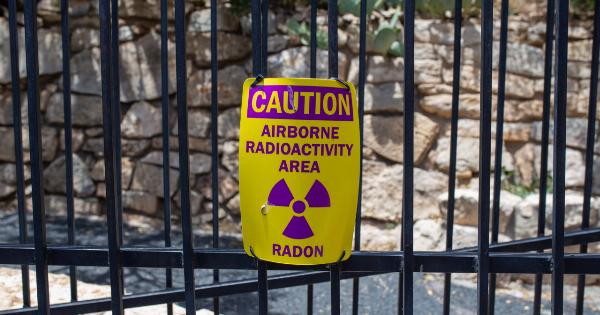Thyroid cancer is a type of cancer that originates in the cells of the thyroid gland, which is located in the front of the neck.
This small butterfly-shaped gland produces hormones that regulate various functions in the body, such as metabolism, growth, and energy levels. Like any other form of cancer, thyroid cancer occurs when abnormal cells in the thyroid gland start to grow and multiply uncontrollably.
Types of Thyroid Cancer
There are different types of thyroid cancer, with some being more common than others. The main types include:.
Papillary Thyroid Cancer (PTC)
Papillary thyroid cancer is the most common type, accounting for about 80% of all cases. It usually develops in women more than men and tends to occur in individuals between the ages of 30 and 50.
PTC often has a slow growth pattern and is generally associated with a good prognosis.
Follicular Thyroid Cancer (FTC)
Follicular thyroid cancer accounts for about 10-15% of thyroid cancer cases. This type of cancer typically affects older individuals, with a higher occurrence in women.
FTC tends to grow at a slightly faster rate compared to PTC and has a good prognosis if detected early and effectively treated.
Medullary Thyroid Cancer (MTC)
Medullary thyroid cancer makes up approximately 4% of thyroid cancers. It arises from the C cells of the thyroid gland, which produce a hormone called calcitonin.
MTC can occur sporadically or be inherited as part of multiple endocrine neoplasia (MEN) syndrome. With early detection and appropriate treatment, the prognosis for MTC is generally favorable.
Anaplastic Thyroid Cancer (ATC)
Anaplastic thyroid cancer is rare but the most aggressive and deadliest form of thyroid cancer. It accounts for only about 1-2% of cases. ATC typically occurs in older individuals and grows rapidly, making it more challenging to treat successfully.
Prognosis for ATC is often poor, primarily due to the advanced stage at diagnosis.
Linking Professions to Thyroid Cancer Danger
Thyroid cancer is influenced by various factors, including genetics, radiation exposure, and lifestyle.
While there isn’t a direct link between specific professions and thyroid cancer danger, some occupations may have an increased risk due to certain environmental or occupational exposures. Let’s explore some professions that have been studied in relation to thyroid cancer risk:.
1. Radiation Workers
Radiation exposure is a well-known risk factor for thyroid cancer.
Individuals working in industries that involve frequent or prolonged exposure to radiation, such as nuclear power plants, diagnostic imaging centers, and radiation therapy departments, may face an increased risk of developing thyroid cancer. Radiation damages the DNA in cells, potentially leading to cancerous changes over time.
2. Medical Professionals
Medical professionals, particularly those involved in procedures using radiation, are constantly exposed to the potential risks.
Surgeons, radiologists, and interventional cardiologists who often rely on fluoroscopy, a type of imaging technique that uses continuous X-rays, may have an elevated risk of thyroid cancer due to the cumulative radiation exposure throughout their careers.
3. Hairdressers and Beauticians
Hairdressers and beauticians often work with hair dyes, chemicals, and other hair treatment products that contain potentially harmful substances.
Some studies have suggested an association between exposure to certain hair dye ingredients and a slightly increased risk of thyroid cancer. However, more research is needed to establish a direct causative link.
4. Agriculture and Farming
Agricultural workers, including farmers, pesticide applicators, and those involved in crop cultivation, may encounter various chemicals and pesticides.
While there is limited evidence regarding the direct link between agricultural exposure and thyroid cancer, some studies have shown potential associations. Pesticides and herbicides are known to contain carcinogenic compounds that could potentially affect the thyroid gland.
5. Mining and Industrial Workers
Workers in the mining and industrial sectors may come into contact with hazardous substances like asbestos, silica, and radiation. Exposure to these substances has been linked to an increased risk of various cancers, including thyroid cancer.
Industrial processes involving the extraction, refining, and handling of toxic materials can potentially contribute to the development of cancerous conditions.
6. Rubber Manufacturing Industry
Workers in the rubber manufacturing industry are exposed to a wide range of chemicals known as endocrine-disrupting compounds (EDCs). EDCs can interfere with the normal functioning of the endocrine system, including the thyroid gland.
While more research is required, some studies have indicated a potential association between occupational exposure in the rubber industry and an elevated risk of thyroid cancer.
7. Firefighters
Firefighters face several occupational hazards, including exposure to smoke, chemicals, and toxins. Some studies have suggested a link between firefighting and various forms of cancer, including thyroid cancer.
The inhalation of hazardous combustion byproducts and the absorption of toxic substances through the skin may contribute to an increased risk in this profession. However, additional research is needed to fully understand the connection.
8. Chemical Industry Workers
Workers in the chemical industry handle a wide array of potentially hazardous substances. Exposure to certain chemicals, such as benzene and vinyl chloride, has been associated with an increased risk of thyroid cancer.
The production and use of chemicals in industrial settings can result in significant exposure levels, potentially impacting the thyroid gland and increasing cancer susceptibility.
9. Construction Workers
Construction workers often encounter various hazardous materials during their work, such as asbestos, silica, and diesel exhaust. Exposure to these substances has been linked to an increased risk of several cancers, including thyroid cancer.
Airborne dust and particles from construction sites can potentially affect the thyroid gland, although more research is necessary to establish a direct link.
10. Nuclear Plant Workers
Occupational exposure to radiation among nuclear plant workers is a significant concern. The constant proximity to radioactive materials and radiation sources may increase the risk of developing thyroid cancer.
Protective measures, strict safety protocols, and regular monitoring are in place to minimize exposure; however, the long-term effects of radiation exposure in this profession are still being studied.
Conclusion
While no specific profession can be directly linked to an increased risk of thyroid cancer, several occupational factors and exposures have been studied for potential associations.
It is crucial for individuals working in these industries to follow safety guidelines, use protective equipment, and undergo regular health check-ups to detect any potential health issues, including thyroid cancer, at an early stage.




























